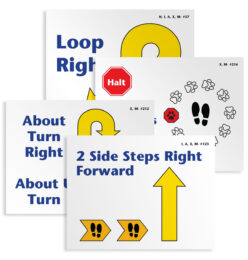Nutrition
Nutrition affects behavior in both dogs and people. Just as too much sugar can cause kids to become hyperactive, cranky, and out of control, poor nutrition can contribute to canine behavior issues. Dogs who are anxious, fearful, “hyperactive” or aggressive are likely to be even more so with excess sugar and unhealthful chemicals flooding their system.
There are so many dog foods on the market that it can be confusing to figure out which ones are truly nutritious. Learning to read labels will allow you to bypass exaggerated advertising claims and get a realistic idea of a product’s quality.
By law, dog food manufacturers must list ingredients in descending order by bulk weight. For example, a bag of dry kibble that lists the first three ingredients as “chicken meal, chicken by-product meal, rice” has more chicken meal than any other ingredient. Because dogs are primarily carnivores, the first two ingredients should contain meat.
The most common meat sources are chicken, turkey, lamb, and beef. There are three grades of meat: using chicken as an example, the highest quality is simply labeled “chicken.” This indicates a whole meat source—the clean flesh of slaughtered chickens, limited to lean muscle tissue. A step below that is “chicken meal,” made from rendered muscle and tissue. (Rendering separates fat-soluble from water-soluble materials, removes most of the water, and may destroy or alter some natural enzymes and proteins found in raw ingredients.) If “meal” is listed, the source should be identified (rather than the vaguely descriptive “poultry meal” or “meat meal”).
The lowest level of chicken would be “chicken by-products.” Chicken by-products may contain heads, feet, undeveloped eggs, and intestines. Dog foods that contain by-products, especially when they appear high on the list of ingredients, are not of high quality.
Avoid dog foods that contain large amounts of corn. Corn is a common allergen that has been known to cause itchy skin as well as hyperactive behavior (through a series of chemical reactions in the body, it actually lowers serotonin—the neurotransmitter that contributes to calmness—levels in the brain). Other ingredients to avoid include artificial colors or flavors, and any that are not identified by source (for example, “animal fat” rather than “chicken fat”). Also, read the ingredient line that begins “preserved with…” The desirable preservatives are vitamins E (sometimes listed as “mixed tocopherols”) and C (often called “ascorbic acid”). Unhealthful, potentially cancer-causing preservatives to watch for are BHA, BHT and ethoxyquin.
Beware! Some sneaky manufacturers break down less-than-ideal ingredients into parts so they can be listed separately and therefore appear lower on the ingredients list. For example, the list might read “chicken meal, ground corn, corn meal, corn gluten meal.” In reality, if all the corn products were grouped together, there would be more corn than chicken by bulk weight, so corn would have to be listed first.
In general, supermarket brands are of lower quality than those found at pet supply stores. Higher quality foods are more expensive, but because they contain more nutrients, less is fed per meal, so it balances out. And because the body is able to absorb more nutrients, less waste is produced! Feeding a high quality food is an investment in your dog’s health. Spending a bit more now might well save you the cost of veterinary visits in the future.


